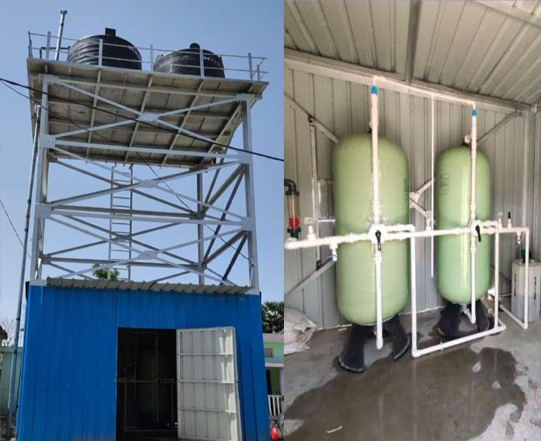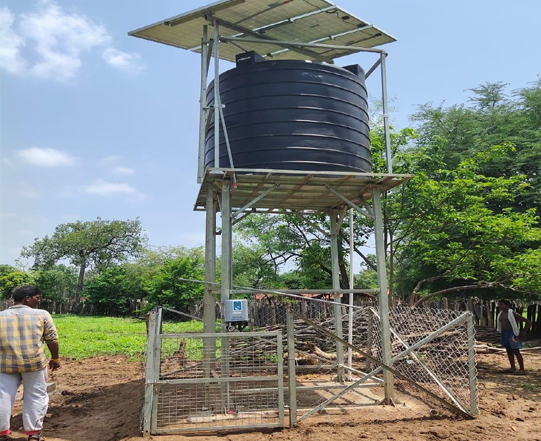PROJECTS
Solar On-Grid System
On-grid or grid-tie solar systems are by far the most common and widely used by homes and businesses. These systems do not need batteries and use common solar inverters and are connected to the public electricity grid. Any excess solar power that you generate is exported to the electricity grid and you usually get paid a feed-in-tariff or credits for the energy you export.
Unlike hybrid systems, on-grid solar systems are not able to function or generate electricity during a blackout due to safety reasons. Since blackouts usually occur when the electricity grid is damaged; If the solar inverter was still feeding electricity into a damaged grid it would risk the safety of the people repairing the fault/s in the network.
Rural Piped Water Supply Schemes
For several villages the main source of drinking water is the available underground water, 90% of the villager’s use this underground water for the drinking purposes. But few pockets in different areas are using ground water with geogenic contamination of Arsenic, Fluoride, and Iron.
Drinking water contaminated with Arsenic leads to skin diseases like Keratosis and Melanosis which sometimes lead to Cancer. In the same manner, Flourosis is caused by contaminated water with fluoride leading to problems associated with teeth and bones. Excess of Iron in water leads to discolouration of water and sometimes it can be seen with change in colour of utensils.
According to the various facts considered in respect to Arsenic, Fluoride and Iron affected areas, the following schemes are implementing by the government.
- Arsenic affected areas :-Rural Pipe water supply schemes based on the Adsorption/ Co filtration and solar power
- Fluoride affected areas:-Rural Pipe water supply schemes based on Ion Exchange and Adsorption techniques
- Iron affected areas:-Rural Pipe water supply schemes based on Oxidation and Filtration
Solar Energy Based Dual Pump Piped Water Supply
Bore well / tube wells are the only sources of drinking water in small / inaccessible habitations. When water level in the wells reduces or hand pumps go out of order providing minimum life supporting drinking water in these villages comes as a very big challenge. Since most of these habitations are either un- electrified, power starved or the power supply is highly erratic energising the wells with normal grid power is also very difficult. Frequent natural calamity disrupts the normal water supply due to grid failure.
In such scenario Solar PV water pumping systems in tandem with regular existing hand pumps (called as dual pump) emerge as viable option for ensuring uninterrupted drinking water supply.
The Use of Solar Power in Farming
Solar energy might be one of the easiest ways for farmers to produce energy. The use of solar energy in agriculture is becoming increasingly popular and the energy produced from this renewable source can be used either on the farm or in the local power grid, providing the farmer with an additional income.
One of the areas in agriculture that benefits the most from solar energy is irrigation, especially in arid regions. The main reason is that using the sun for irrigation represents a virtuous circle: when the sun shines, it feeds the irrigation system, well, we know that crops needs more water when the sun shines a lot. Therefore, a large quantity of energy is available when it is actually needed.
In many rural areas the access to the electricity grid is not always guaranteed. In this case, farmers cannot rely on the traditional irrigation system. Thus, using an independent and alternative energy system can be a solution for the farmer to secure a safe power source and for the public grid to avoid saturation.




